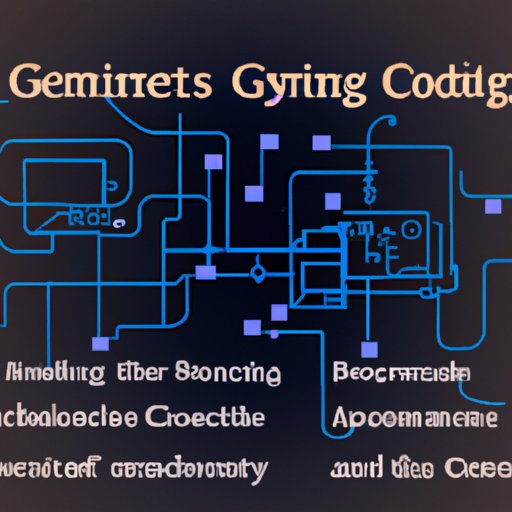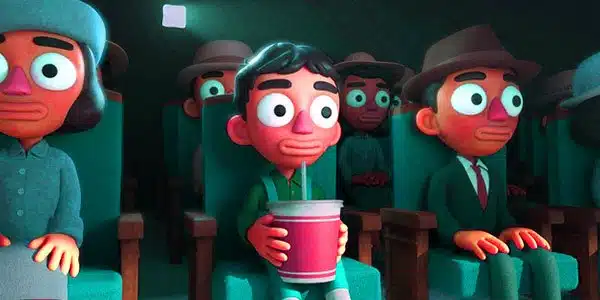Imagine a world without the dazzling special effects in Marvel movies, the immersive CGI landscapes of Avatar, or the seamless visual transitions in your favorite TV show. Computer science, often considered a realm of code and algorithms, has quietly revolutionized the entertainment industry, becoming the unseen force that brings our favorite stories to life.

Image: www.tffn.net
Beyond the glitz and glamour, computer science plays a crucial role in how movies and television are created, distributed, and even consumed. From the earliest days of film to the era of streaming giants, this technological powerhouse has continuously pushed the boundaries of storytelling and entertainment.
The Evolution of Visual Effects: From Stop-Motion to CGI
The captivating visual effects we see in movies today are a far cry from the early days of filmmaking. Before the dawn of computer science, filmmakers relied on meticulous techniques like stop-motion animation or elaborate mechanical models to create visual magic. Think of the iconic dinosaurs in “King Kong” (1933) or the intricate puppetry in “The Wizard of Oz” (1939). These were all feats of ingenuity, but they were time-consuming, expensive, and limited in scope.
Enter computer science. With the advent of computers in the mid-20th century, a new era of visual effects began to emerge. Early computer-generated imagery (CGI) was rudimentary, often limited to simple shapes and textures. Remember the iconic “Star Wars” lightsaber battles? While those dazzling effects were groundbreaking for their time, they relied heavily on techniques like matte painting and optical illusions.
However, as computing power soared and algorithms grew more sophisticated, CGI rapidly evolved, becoming a dominant force in modern filmmaking. Today, movies like “Avatar” and “The Avengers” showcase the incredible realism and immersive power of modern CGI, seamlessly blending the virtual and real, blurring the lines between fantasy and reality.
Computer Science Beyond Visual Effects: Shaping the Entertainment Industry
While CGI has become synonymous with computer science’s impact on movies and television, the influence goes far beyond the visual realm. Computer science is now underpinning virtually every aspect of the entertainment industry, transforming how stories are told, produced, and distributed.
1. Scriptwriting and Storytelling: Utilizing AI to Generate Ideas and Characters
Gone are the days of writers solely relying on their imagination. Computer science is increasingly being incorporated into the creative process, with AI tools assisting in scriptwriting and character development. These AI systems can analyze large datasets of existing stories, identifying patterns, themes, and popular tropes, helping writers brainstorm ideas and develop compelling characters.
AI-powered tools can also provide writers with suggestions for plot twists, dialogue, or even character arcs, ensuring a more dynamic and engaging narrative. While some might fear AI replacing human writers, the reality is that these tools serve as a powerful extension of the creative process, providing a wealth of inspiration and insights.

Image: askdegrees.com
2. Film Production: Streamlining the Workflow with Digital Tools
From pre-production to post-production, computer science has revolutionized filmmaking efficiency. Digital cameras have replaced bulky film cameras, allowing filmmakers to capture footage more quickly and efficiently. Digital editing software has replaced traditional film editing, enabling seamless transitions, special effects, and dynamic storytelling.
Furthermore, computer science-driven tools like virtual reality (VR) and augmented reality (AR) are changing how directors visualize scenes and actors rehearse. VR simulations can create immersive environments, allowing filmmakers to experience the set and camera angles firsthand, while AR can overlay digital elements in the real world, enabling actors to interact with virtual objects during rehearsals.
3. Distribution and Consumption: Delivering Content Globally with Streaming Services
Computer science is the driving force behind the revolution in content distribution. Streaming services like Netflix, Amazon Prime Video, and Hulu are leveraging computer science to deliver movies and TV shows to millions of viewers instantly, anywhere in the world.
These platforms utilize sophisticated algorithms to recommend content based on user preferences, personalize user experiences, and manage massive libraries of digital content. The rise of streaming services is redefining how we consume entertainment, offering viewers greater control and flexibility in their viewing choices.
4. Interactive Storytelling and Immersive Experiences
Computer science is pushing the boundaries of storytelling by enabling interactive experiences. Video games have already embraced this paradigm, allowing players to shape narratives and make choices that influence the story’s outcome. This trend is now extending to movies and television, creating more engaging and personalized experiences for viewers.
We are witnessing the emergence of “choose your own adventure” movies and interactive TV shows that allow viewers to actively participate in the story, making decisions and influencing the plot’s direction. This level of engagement creates a deeper connection between the viewer and the narrative, making each experience truly unique.
The Future of Computer Science in Entertainment: What Lies Ahead
The relationship between computer science and the world of movies and television is constantly evolving. Here are some key trends to watch:
- AI-generated Content: As AI technology advances, we can expect to see more AI-generated characters, scores, and even entire storylines, further blurring the lines between human creativity and machine intelligence.
- Advanced VR and AR Experiences: The immersive power of VR and AR will continue to transform movie-watching experiences, allowing audiences to step into virtual worlds and interact with characters and stories in entirely new ways.
- Personalized Entertainment: With AI algorithms becoming more sophisticated, streaming services will provide increasingly personalized content recommendations, allowing viewers to discover new movies and TV shows that perfectly align with their preferences.
- Interactive Storytelling: Interactive narratives will become even more prevalent, with viewers having greater control over the unfolding story, leading to truly unique and personalized viewing experiences.
How Does Computer Science Impact Movies And Television
How Computer Science is Changing the Landscape of Entertainment
Computer science is not just a technical tool for creating special effects; it’s a powerful force shaping the way we engage with movies and television. As technology continues to evolve, we can expect even greater innovations in the future, pushing the boundaries of storytelling and creating immersive, interactive, and personalized entertainment experiences.





